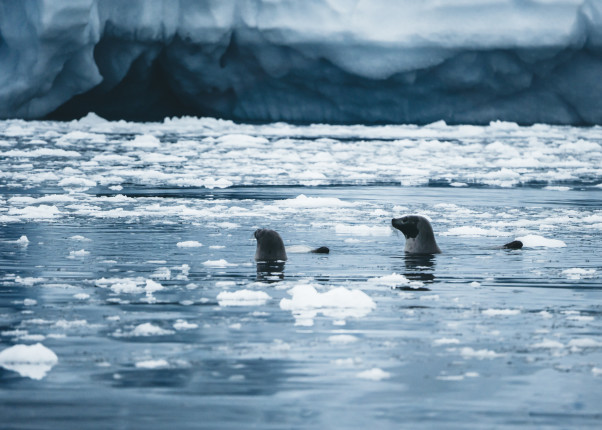-
PFAS ‘Forever Chemicals’ Harming Wildlife the World Over: Study
October 9, 2023 By Sharon Guynup
This article, by Sharon Guynup, originally appeared on Mongabay.
In Hawaii and elsewhere in the North Pacific, few hatchlings are emerging from the nests of endangered hawksbill and green sea turtles. In Wisconsin, some tree swallows have failed to produce offspring. In California, infectious diseases are now more common in southern sea otters. In Michigan, bluegills are swimming slower. In the Arctic, some hooded seals and their pups have thyroid problems. And in North Carolina’s Cape Fear River, American alligators have been found with lesions and unhealed, infected wounds.
What each of these disparate places, animals and maladies have in common is high exposure to long-lived, human-made chemicals: per- and polyfluoroalkyl substances, better known as PFAS.
While it’s now well known that human exposure to PFAS can cause cancer, reduce immunity, impair fertility, cause liver damage and trigger myriad other health problems, scientists are becoming increasingly aware that wildlife is also at risk.
A new study published September 26th in The Science of the Total Environment documents how exposure affects animals in the wild and includes an updated map pinpointing wildlife exposure to PFAS on every continent, with hotspots in the U.S., Europe, China and Australia. But the study’s lead author, David Andrews, notes that pretty much anywhere you look for these long-lived “forever chemicals,” you’ll find them.
Andrews, a senior scientist at the nonprofit Environmental Working Group (EWG) and his team scoured scientific journals to compile this planetwide overview, a first-time analysis of existing data. They found that more than 600 species risk harm from PFAS. It’s an alarming discovery amid a biodiversity crisis in which about half of the world’s species are in decline and already threatened by numerous other stressors.
While hundreds of peer-reviewed investigations have evaluated how these chemicals affect human health, research on PFAS and wildlife is relatively recent but is growing, Andrews says. So, in an odd twist for science—which traditionally uses animals to assess health threats to people—humans are acting as a sentinel species for PFAS wildlife exposure.
Continue Reading on Mongabay Here.
Sharon Guynup is a Global Fellow with The Wilson Center’s Environmental Change and Security and China Environment Programs. She is also a National Geographic Explorer. Much of her work on environmental issues focuses on wildlife, ecosystems and the threats they face
Sources: Mongabay and Wiley Online Library.
Photo credit: Hooded seal swimming in Greenland, courtesy of Mathias Berlin/Shutterstock.com.
 A Publication of the Stimson Center.
A Publication of the Stimson Center.



